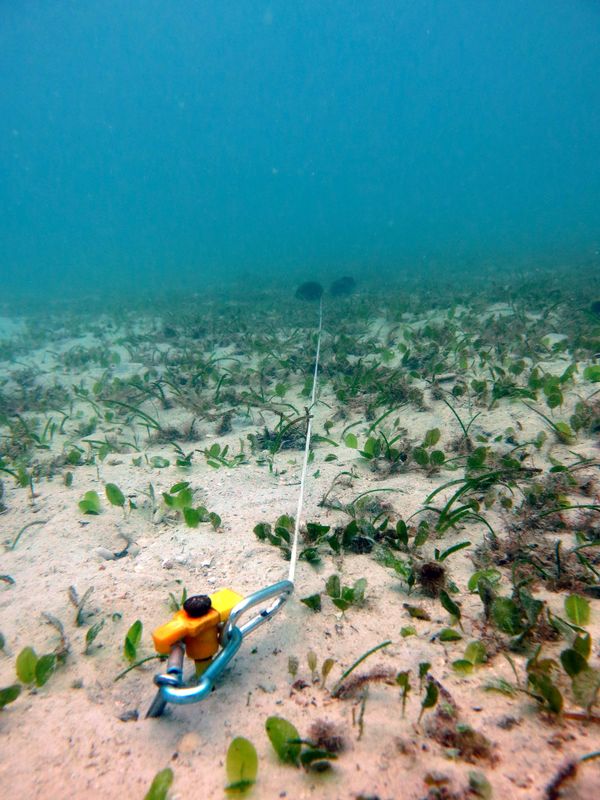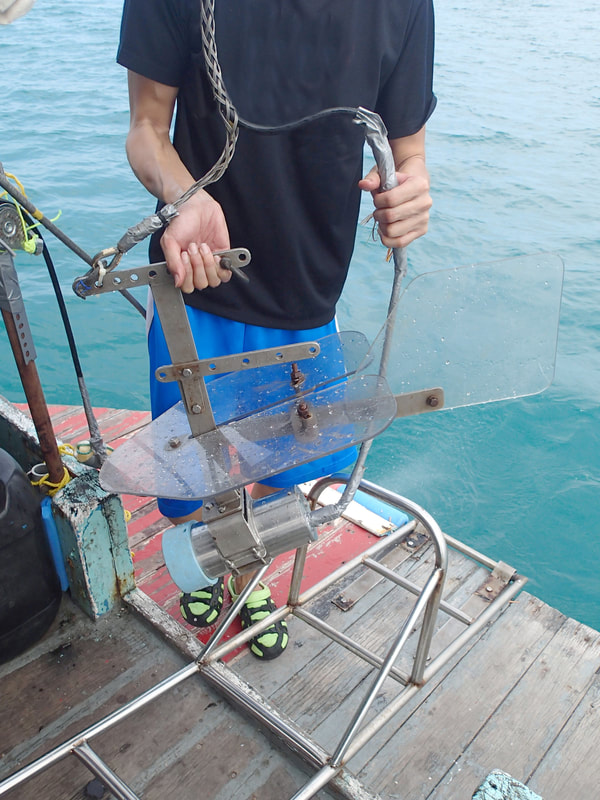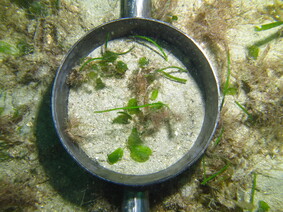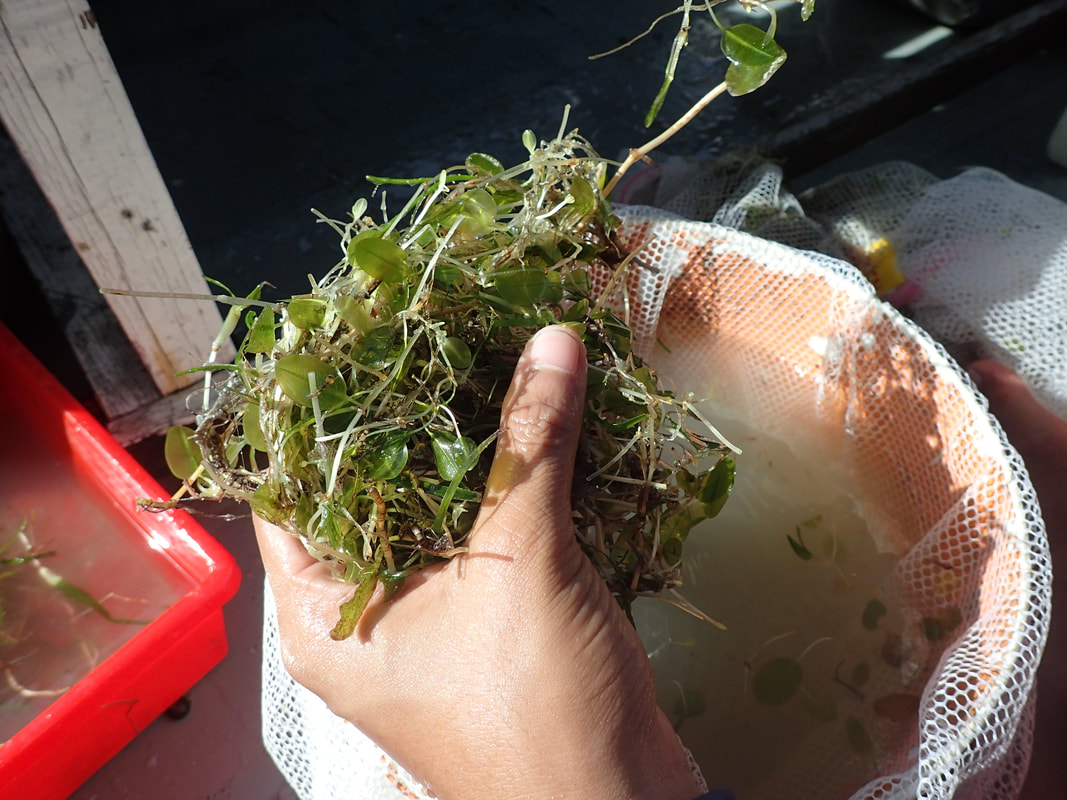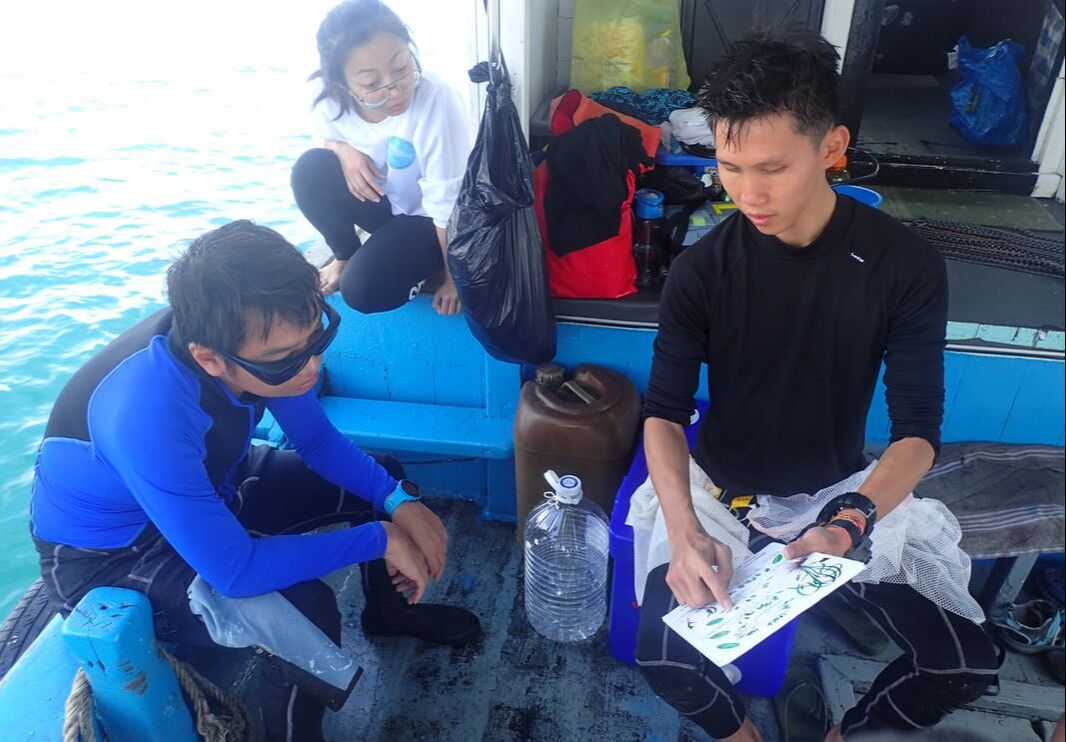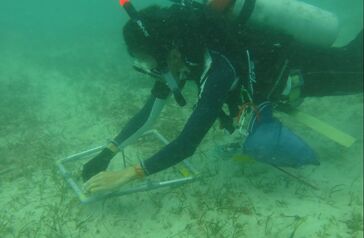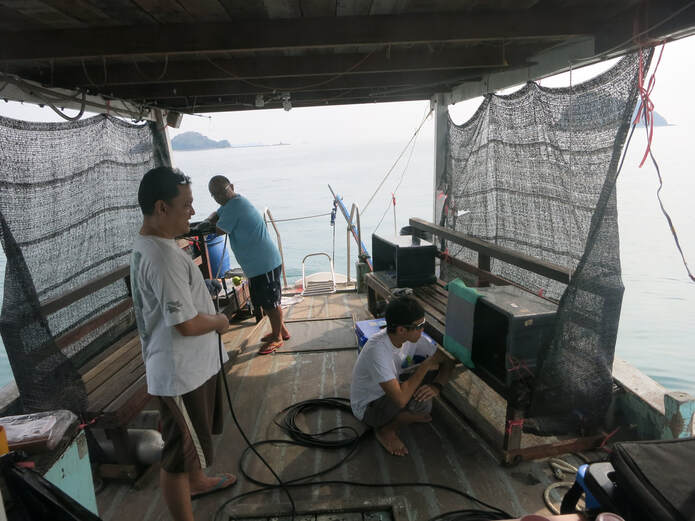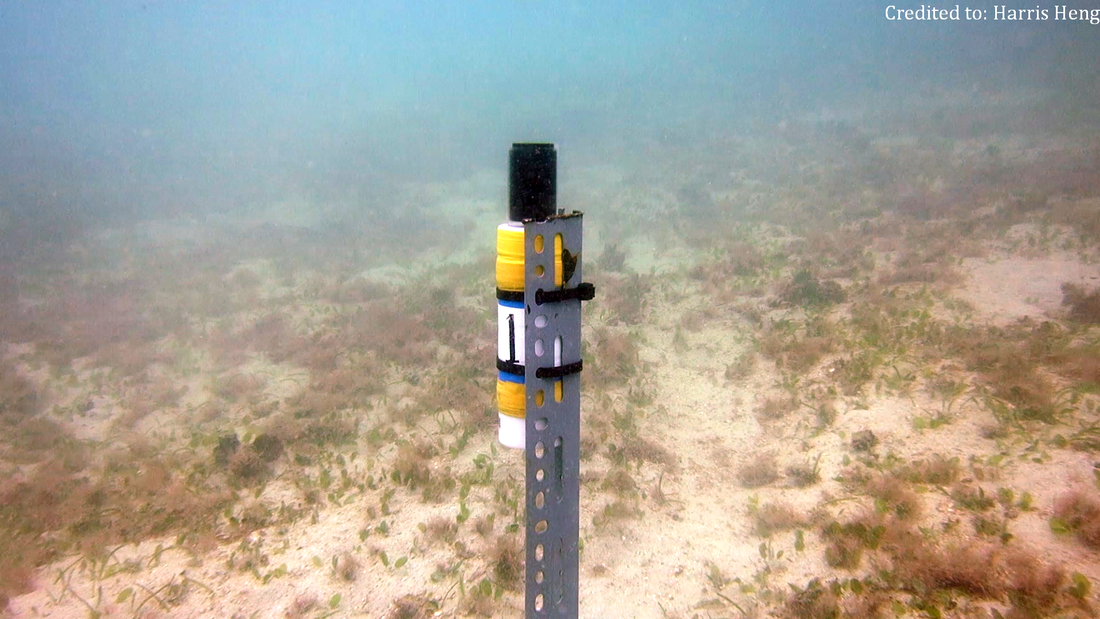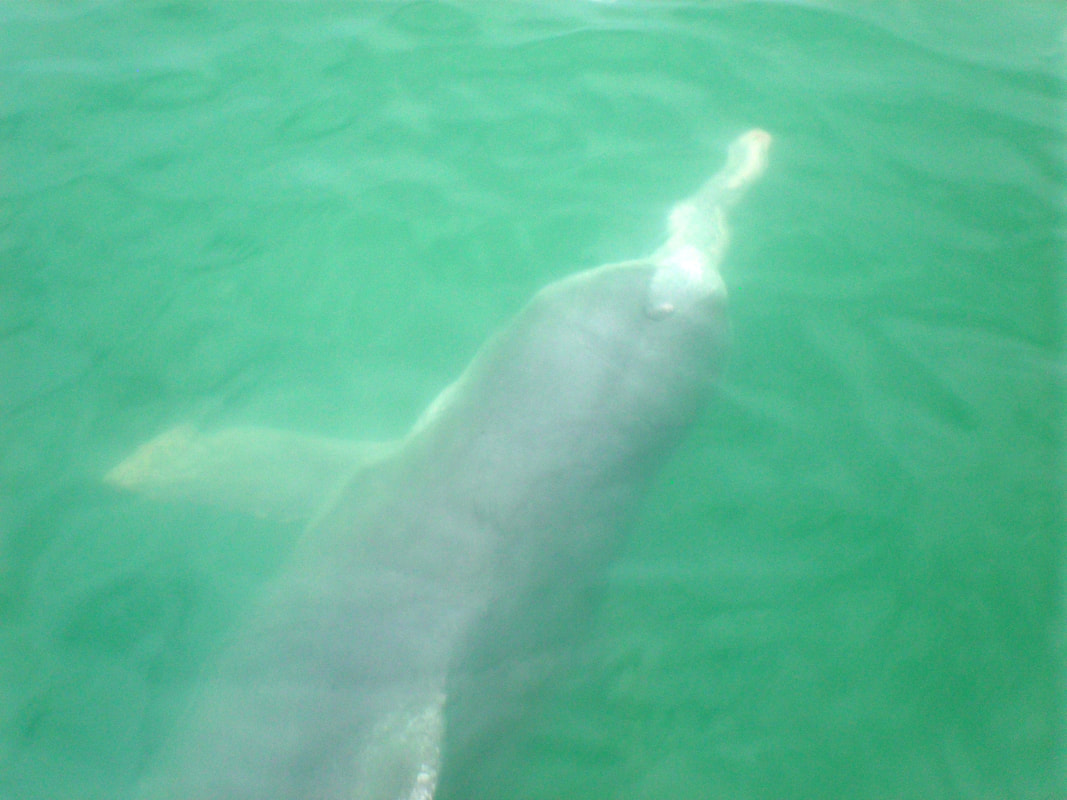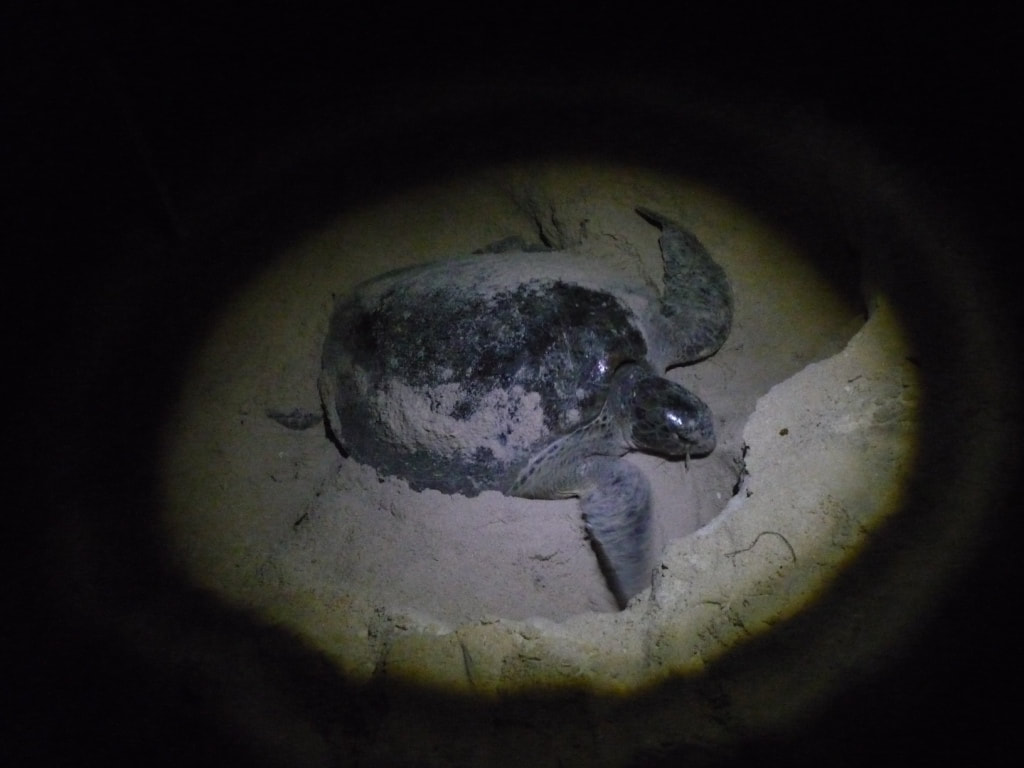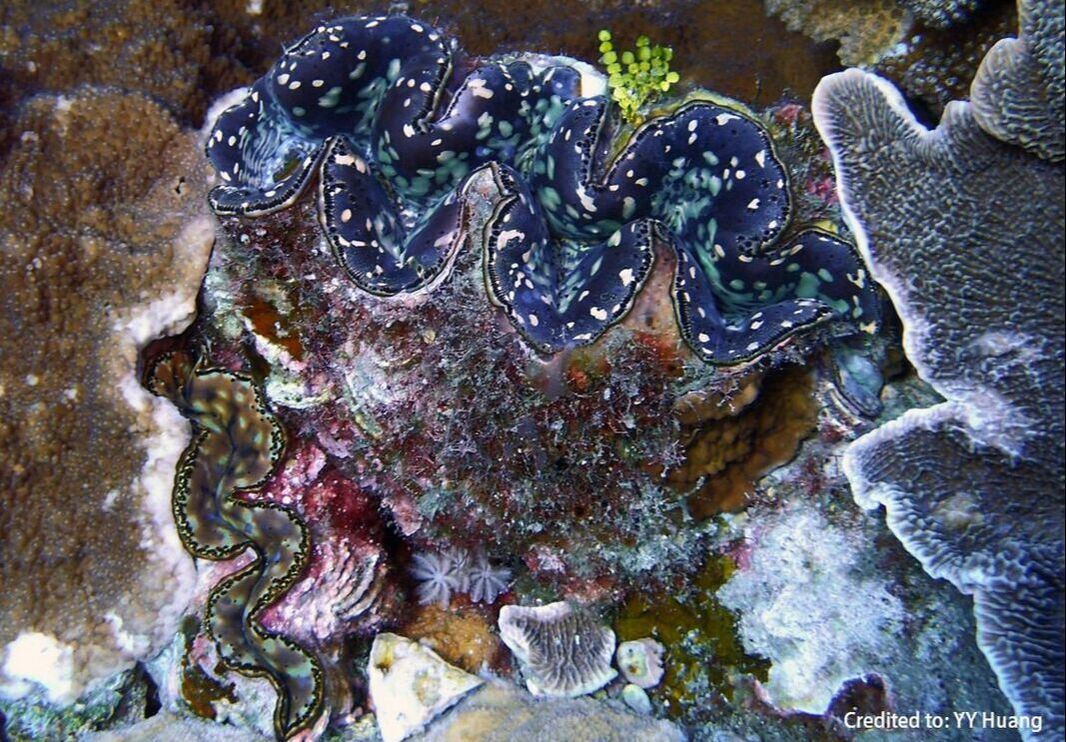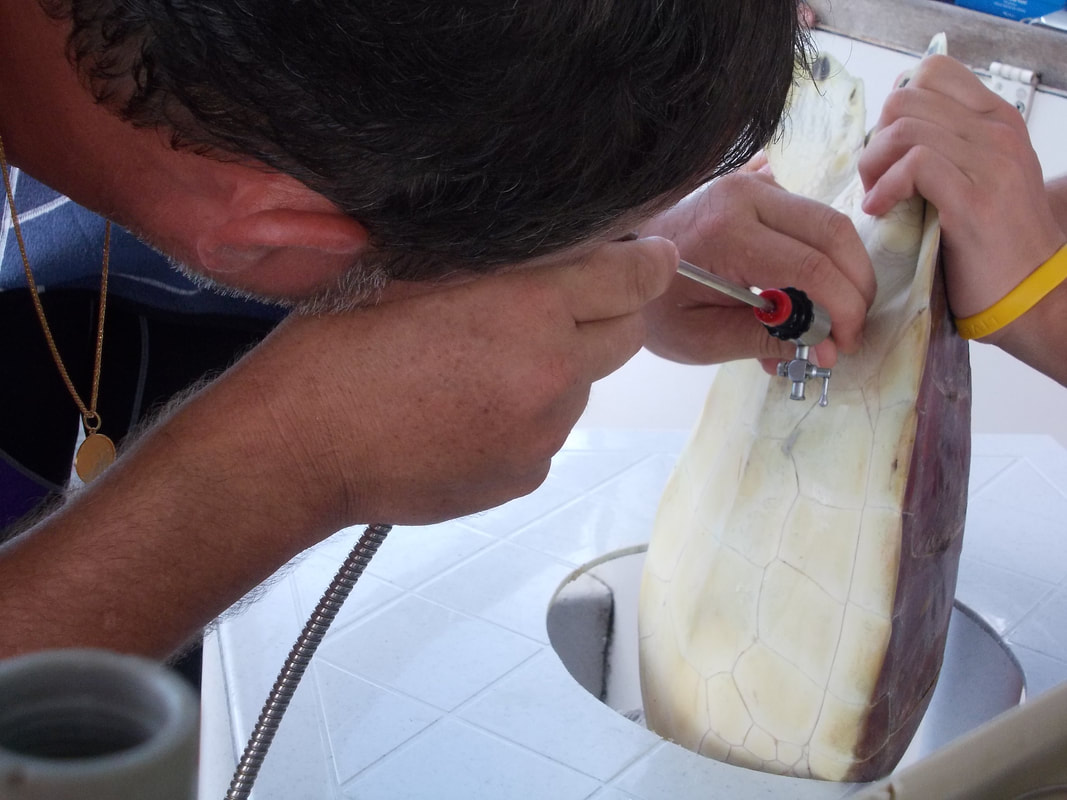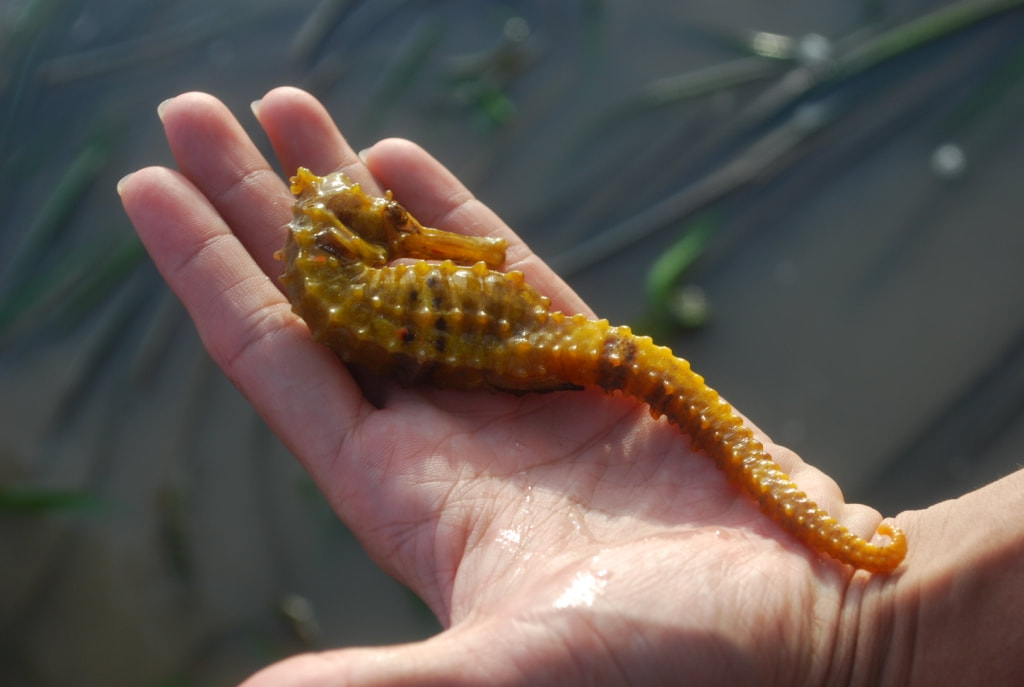MASTER'S PROJECT
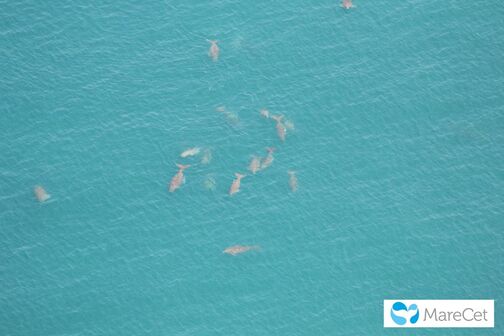 Aerial view of dugongs herd in Sibu Archipelago, Johor, Malaysia.
Aerial view of dugongs herd in Sibu Archipelago, Johor, Malaysia.
Mapping Seagrass Habitat and Characterising Dugong Feeding Preferences in Sibu-Tinggi Archipelago, Johor, Malaysia
Background:
In Southeast Asia, seagrass meadows are under threat through coastal development and increased pollution, but remain understudied. The dugong is a marine herbivore that is dependent on the availability of seagrass as a primary food source. In this study, we assess the patterns of co-occurrence between dugongs and seagrass. We hypothesize that the changing spatial patterns of dugong feeding are positively correlated to the seasonal variation in distribution and abundance of mixed species in subtidal tropical seagrass meadows.
Results:
We documented seagrass cover and dugong feeding trails in the Sibu Archipelago meadow in Johor, Malaysia, across the monsoon seasons of 2016–2017 using an underwater towed video method. Moran’s I and Getis-Ord Gi* statistics were used to quantify the degree of clustering in feeding trails, feeding patch size, and to identify feeding hotspots and coldspots. This site has the single largest subtidal meadow in Peninsular Malaysia known to date, measuring 12.88 km2. The study captured a reduction in seagrass extent and coverage during the study. Feeding trail occurrence averaged three per image throughout the seasons, with the maximum number being 14 trails per image. Dugongs fed in a spatially clustered manner leaving two distinct feeding trail patterns: (1) a dispersed pattern when seagrass cover was high or low (76–100% and 0–25%) that resulted in larger patch sizes, and (2) a concentrated pattern in moderate seagrass cover (26–75%) that resulted in smaller patch size. Feeding hotspots and coldspots had significantly different seagrass cover, suggesting that dugongs foraged strategically within the meadow. Our results demonstrate that seagrass cover played a significant role in driving dugong feeding patterns and in creating feeding hotspots and coldspots in tropical subtidal meadows.
In Southeast Asia, seagrass meadows are under threat through coastal development and increased pollution, but remain understudied. The dugong is a marine herbivore that is dependent on the availability of seagrass as a primary food source. In this study, we assess the patterns of co-occurrence between dugongs and seagrass. We hypothesize that the changing spatial patterns of dugong feeding are positively correlated to the seasonal variation in distribution and abundance of mixed species in subtidal tropical seagrass meadows.
Results:
We documented seagrass cover and dugong feeding trails in the Sibu Archipelago meadow in Johor, Malaysia, across the monsoon seasons of 2016–2017 using an underwater towed video method. Moran’s I and Getis-Ord Gi* statistics were used to quantify the degree of clustering in feeding trails, feeding patch size, and to identify feeding hotspots and coldspots. This site has the single largest subtidal meadow in Peninsular Malaysia known to date, measuring 12.88 km2. The study captured a reduction in seagrass extent and coverage during the study. Feeding trail occurrence averaged three per image throughout the seasons, with the maximum number being 14 trails per image. Dugongs fed in a spatially clustered manner leaving two distinct feeding trail patterns: (1) a dispersed pattern when seagrass cover was high or low (76–100% and 0–25%) that resulted in larger patch sizes, and (2) a concentrated pattern in moderate seagrass cover (26–75%) that resulted in smaller patch size. Feeding hotspots and coldspots had significantly different seagrass cover, suggesting that dugongs foraged strategically within the meadow. Our results demonstrate that seagrass cover played a significant role in driving dugong feeding patterns and in creating feeding hotspots and coldspots in tropical subtidal meadows.
SELECTED FIELDWORK & LABORATORY WORK
(Research Assistant/ Intern/ Volunteer)
Dugong Acoustic Survey in Johor, MalaysiaDolphin Survey in Matang, Perak, MalaysiaSea Turtle Monitoring Program in Chagar Hutang, Redang Island, Malaysia |
Genetic Connectivity of Small Giant ClamSea Turtle Population Study in Mantanani Island, Sabah, MalaysiaSeahorse and Pipefish Monitoring in Sungai Pulai, Johor, MalaysiaCMS-UNEP Dugong Questionnaire Survey in Sabah, Malaysia |
